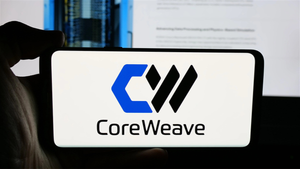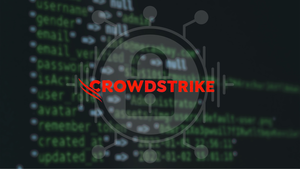
The financial markets are currently grappling with a fascinating, and at times unsettling, economic phenomenon: a "jobless expansion." This unique scenario sees the overall economy demonstrating robust growth in output and services (GDP), even as employment levels stagnate or, in some sectors, begin to decline. This disconnect presents a complex picture for investors, with the immediate implications suggesting a potential boost for corporate profits through lower labor costs and enhanced productivity, particularly driven by the accelerating adoption of Artificial Intelligence (AI).
While traditional economic theory often links strong job growth to a healthy stock market, the current environment challenges this notion. With companies increasingly leveraging AI to automate tasks and optimize operations, the ability to expand economic output with fewer employees is becoming a tangible reality. This shift could lead to a paradoxical rally in equity markets, where improved corporate earnings, fueled by reduced wage expenses and technological efficiencies, drive stock valuations higher even as unemployment figures tick upwards.
The AI-Powered Divide: How Productivity Gains Reshape the Job Market
The concept of a "jobless expansion," sometimes referred to as a "jobless recovery" or "jobless growth," denotes an economic period where GDP expands without a proportional increase in employment. This critical divergence is not merely an abstract economic theory; it is a tangible force shaping current market dynamics. The primary drivers behind this trend are two-fold: the relentless pursuit of lower labor costs by corporations and the transformative, albeit disruptive, integration of Artificial Intelligence into business operations.
Historically, economic recoveries have been characterized by a robust rebound in employment. However, the current cycle is different. Companies are finding innovative ways to boost productivity with their existing workforce or, more significantly, by adopting advanced technologies that reduce the need for human labor. This strategy directly impacts corporate bottom lines. As wages represent a substantial operational expense for most businesses, stagnant or declining employment growth translates into significant cost savings, directly enhancing profit margins and ultimately leading to higher corporate earnings. Estimates suggest that even a modest shift in labor cost growth can have a material impact on earnings per share for major indices like the S&P 500.
The accelerating adoption of AI stands as a pivotal force in this jobless expansion. AI technologies are enabling unprecedented levels of automation and efficiency across various industries. From streamlining customer service through chatbots to optimizing manufacturing processes and automating data analysis, AI allows businesses to achieve more with less human intervention. This technological leap contributes to economic growth while simultaneously curbing job creation, creating a "workerless expansion" in specific sectors. While the long-term impact of AI on job creation is a subject of ongoing debate, its immediate effect is often one of displacement, freeing up capital that can then be reinvested or returned to shareholders, thus boosting stock performance.
The implications for the stock market are profound. Investors often interpret weak employment data as a signal for central banks, like the Federal Reserve, to potentially ease monetary policy by cutting interest rates. Lower interest rates generally make future corporate earnings more valuable, thereby supporting higher stock valuations across the board. When combined with the prospect of improved corporate profit margins driven by lower labor costs and AI-fueled efficiency, this expectation can fuel significant market rallies. The result is a scenario where major indices might reach new highs, even as the broader labor market experiences a slowdown, leading investors to favor companies that are effectively leveraging AI and managing labor costs.
The Shifting Sands of Fortune: Identifying the Winners and Losers
The advent of a jobless expansion, fueled by AI and the relentless drive for lower labor costs, is creating a clear bifurcation in the market, distinguishing between those companies and sectors poised for unprecedented growth and those facing significant disruption. This economic recalibration will undoubtedly lead to a redistribution of wealth and influence across various industries.
At the forefront of the "winners" are the architects and purveyors of Artificial Intelligence itself. Companies providing the foundational hardware and infrastructure for AI are experiencing a boom. Nvidia (NVDA), a dominant force in graphics processing units (GPUs) essential for AI and machine learning, continues to be a primary beneficiary. Similarly, Advanced Micro Devices (AMD), another key player in high-performance processors, and companies involved in semiconductor manufacturing like Micron Technology (MU), TSMC (TSM), and Broadcom (AVGO), are seeing surging demand for their critical components. These firms are not just enabling the AI revolution; they are directly profiting from its exponential growth.
Beyond hardware, AI software and platform developers are also thriving. Tech giants like Microsoft (MSFT) and Alphabet (GOOGL) are pouring billions into AI R&D, embedding AI into their cloud services (Azure, Google Cloud) and various software products, often leading to increased efficiency and, in some cases, leaner workforces. Salesforce (CRM) leverages its Einstein AI to revolutionize customer relationship management, while Palantir Technologies (PLTR) specializes in AI-powered big data analytics, serving governments and large enterprises. Even legacy players like Oracle (ORCL) are witnessing record highs, driven by the booming demand for their AI-powered computing services. Furthermore, industries that strategically adopt AI to automate processes, such as high-tech manufacturing, healthcare, pharmaceuticals, finance, and real estate, are poised for significant efficiency gains and cost reductions, translating into stronger financial performance.
Conversely, the "losers" in this new economic paradigm are often found in sectors heavily reliant on routine, repetitive human labor, or those slow to embrace AI. Traditional retail, for example, is facing immense pressure. The widespread adoption of self-checkout systems and automated inventory management at major retailers like Walmart (WMT), Target (TGT), Lowe's (LOW), Home Depot (HD), Dollar General (DG), and Costco (COST) is directly displacing roles traditionally held by cashiers and clerks. The fast-food and hospitality sectors, with companies like McDonald's (MCD) and Starbucks (SBUX), are exploring AI-powered automation for service and food preparation, further reducing the need for human staff in routine positions. Similarly, transportation and warehousing firms like UPS (UPS), Union Pacific (UNP), and CSX (CSX) are seeing jobs in driving, picking, and sorting being automated by autonomous vehicles and robots. Business Process Outsourcing (BPO) firms such as Exela Technologies (XELA) and Conduent (CNDT), which specialize in tasks easily replicable by AI, are also witnessing a decline in market value and relevance. Even some "white-collar" roles, particularly those involving routine cognitive tasks in administrative services, accounting, legal services, and even certain aspects of computer programming, are increasingly vulnerable to generative AI, signaling a broader occupational shift.
A New Industrial Revolution: Broadening Impacts and Policy Challenges
The "jobless expansion" driven by Artificial Intelligence marks a profound shift, fitting squarely within broader industry trends of accelerating automation and digitalization. This isn't just about isolated technological advancements; it's a systemic overhaul of how industries operate, from manufacturing to services. AI and machine learning are pushing automation beyond mere rule-following, enabling intelligent systems to handle complex tasks like predictive maintenance, nuanced customer support, and intricate supply chain optimization. The convergence of AI with the Internet of Things (IoT) and big data is giving rise to "smart factories" and highly optimized supply chains, where productivity gains are maximized, and operational costs, particularly labor, are minimized. This trend not only boosts efficiency but also contributes to sustainability efforts by optimizing resource usage.
The ripple effects across competitive landscapes and partnership dynamics are already becoming evident. Companies that fail to rapidly integrate AI into their core operations risk falling behind, potentially facing obsolescence. The market is increasingly consolidating around established AI leaders, putting immense pressure on smaller, less agile firms. This dynamic forces aggressive AI adoption as a matter of survival and competitive advantage. Simultaneously, the skyrocketing demand for AI infrastructure – from advanced chips to specialized data center services – creates significant opportunities for strategic partners in these areas. Within supply chains, AI is enhancing management by providing superior demand forecasting, optimizing inventory, and streamlining logistics, leading to across-the-board cost reductions and improved delivery times. This also signals a shift in hiring priorities, with a greater emphasis on specific AI-related skills and complementary human attributes like analytical thinking, adaptability, and critical thinking.
The widespread integration of AI and its potential to foster a jobless expansion presents substantial regulatory and policy challenges. A primary concern is widespread job displacement, particularly for roles that involve routine or repetitive tasks, leading to labor market polarization. This creates a demand for highly skilled AI-related jobs while eroding many middle and low-skilled positions, threatening to exacerbate wealth inequality. Governments are exploring various responses, including significant investments in education and training programs to re-skill the workforce for new, AI-augmented roles in emerging sectors such as technology, the green economy, and care services. Strengthening social safety nets, such as unemployment insurance, and addressing healthcare costs are also being considered to support displaced workers during transitional periods. There's also a growing emphasis on ethical AI deployment, demanding more oversight and potentially leading to policies that incentivize "labor-augmenting" AI technologies that get human work rather than solely replacing it.
Historically, humanity has weathered several industrial revolutions, each marked by fears of technological unemployment. The Luddite movement of the early 19th century, protesting mechanized looms, serves as an early example of resistance to job displacement by machines. More recently, the advent of personal computers and the internet, while initially raising concerns, ultimately created millions of new jobs and industries, leading to a net gain in employment. However, some economists argue that the current era of rapid technological change, particularly with the exponential growth and pervasive applicability of AI, represents a "great decoupling" where productivity growth has outpaced job creation more significantly than in previous revolutions. While historical precedents often demonstrate technology as a net job creator in the long run, the current transition might be more disruptive due to the speed and scope of AI's capabilities, potentially leading to more persistent structural unemployment and underemployment if proactive measures are not taken.
Navigating the Future: What Comes Next in the AI-Driven Economy
The trajectory of a "jobless expansion" orchestrated by Artificial Intelligence presents a multifaceted future, characterized by both immediate disruptions and long-term transformations. In the short term, we can anticipate an initial uptick in unemployment as businesses rapidly adopt AI to automate routine tasks, leading to significant job churn. Roles in administrative support, data entry, customer service, and certain manufacturing segments are particularly vulnerable. While this period might see some economic growth, projected modestly between 0.1% and 1% over the next five years, a critical challenge will be the escalating skill mismatch: the emerging jobs will demand different, often higher-level skills than those possessed by displaced workers, potentially leading to temporary unemployment spikes or underemployment.
Looking further ahead, the long-term possibilities paint a picture of immense productivity growth and economic expansion. AI is poised to significantly boost global GDP, with annual labor productivity increases potentially reaching 0.5% to 3.4% when combined with other technologies through 2040. While historical precedents suggest technology ultimately creates more jobs than it destroys, the transition will be complex. New industries and roles requiring human oversight, data quality assurance, and nuanced human-AI collaboration will undoubtedly emerge. However, a significant concern is the potential for AI to exacerbate income and wealth inequality, as higher-wage earners whose roles complement AI may see disproportionate income increases, while lower-skilled workers face declining wages and job instability, eroding the middle class.
Strategic pivots and adaptations are critical for individuals, businesses, and governments alike. Individuals must embrace lifelong learning, continuously upskilling and reskilling in areas that complement AI, such as critical thinking, creativity, data analytics, and machine learning. Developing proficiency in human-AI collaboration will be paramount. For businesses, a substantial investment in workforce development, through training programs and AI certifications, is essential. They must shift towards agile, adaptive workforce strategies and actively identify repetitive tasks for automation, freeing employees for more creative and complex work, potentially leading to the creation of new, AI-integrated job roles. Governments, meanwhile, face the daunting task of overhauling education systems to focus on AI-complementary skills, establishing comprehensive social safety nets and retraining programs for vulnerable workers, and exploring radical policy solutions like Universal Basic Income (UBI) to support displaced populations. Developing policy guardrails for ethical AI deployment and fostering public-private partnerships to prepare the workforce are also crucial.
This new economic landscape will reshape market opportunities and challenges. We can expect the emergence of entirely new industries and a boom in demand for specialized AI roles, including Machine Learning Engineers, Computer Vision Engineers, and Generative AI Specialists. Sectors like healthcare and education are also projected to see significant job growth, leveraging AI to improve services and efficiency. Conversely, industries like manufacturing, transportation, logistics, and data-intensive administrative roles face considerable job displacement. Increased competition for remaining low-skilled jobs could drive down wages, and the concentration of AI adoption in wealthy regions might widen economic disparities. Data ethics, security, algorithmic bias, and accountability will present ongoing challenges. The future outcome hinges on whether we embrace a "Goldilocks Scenario" where AI empowers workers and fosters equitable growth, or if insufficient policy interventions lead to increased inequality and social tensions. Proactive, collaborative strategies are the only path to harnessing AI's potential for an inclusive economic future.
Conclusion: Navigating the AI-Powered Economic Transformation
The era of "jobless expansion," driven by the pervasive integration of Artificial Intelligence, represents a fundamental economic and societal transformation. It is a period where robust productivity gains and economic growth are achieved without a proportional increase in employment, challenging long-held assumptions about the relationship between economic prosperity and labor market health. This complex phenomenon demands a nuanced understanding and proactive response from all stakeholders.
Key takeaways from this unfolding narrative highlight AI's dual impact on employment: while it is poised to displace millions of jobs, particularly in routine and repetitive tasks, it is also expected to create a substantial number of new roles, potentially leading to a net gain in employment over the long term. This transformation is not merely about automation but a profound shift in the nature of work, demanding a blend of technical acumen, creativity, and adaptability from the future workforce. Moreover, AI is a formidable engine for productivity and economic growth, promising to add trillions annually to the global economy. However, the benefits are not evenly distributed; highly skilled workers adept at leveraging AI are more likely to thrive, while those in lower- or middle-skill jobs face a higher risk of displacement and potential wage stagnation.
Moving forward, the market will be characterized by sustained productivity and economic expansion, albeit with a decoupling of GDP growth from traditional job creation metrics in heavily AI-invested sectors. The imperative for continuous reskilling and upskilling, focusing on STEM, digital literacy, and uniquely human-centric skills like critical thinking and emotional intelligence, will only intensify. This dynamism will necessitate a re-evaluation of educational systems and the strengthening of social safety nets to manage transitions. The lasting impact of this AI revolution, akin to previous industrial upheavals, will hinge on our collective ability to navigate its complexities. It mandates a human-centric approach to technological progress, ensuring AI serves as a catalyst for broad-based prosperity, not just for a select few. The question is not if AI will disrupt the labor market, but how societies choose to manage that disruption to foster new, more productive opportunities.
Investors should closely monitor several critical indicators in the coming months. Scrutinize corporate earnings reports, looking for signs of AI-driven efficiency, revenue growth, and significant investments in AI infrastructure, as companies that can scale without proportional hiring will likely see expanding margins. Keep a keen eye on labor market data, particularly jobless claims and unemployment rates in white-collar sectors, as a sustained decoupling of strong economic growth from robust job creation could signal a deepening jobless expansion. Furthermore, observe governmental policy and regulatory developments concerning AI, worker protection, and reskilling initiatives, as these will be crucial for long-term economic stability. Finally, watch for signs of widening inequality and sector-specific shifts, as these will impact consumer spending and overall market performance. The coming months will be pivotal in shaping the foundations of an AI-powered future, demanding foresight and collaborative strategies to ensure a prosperous and equitable transition.


















